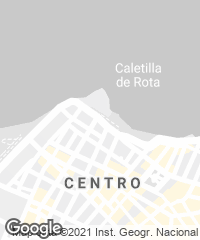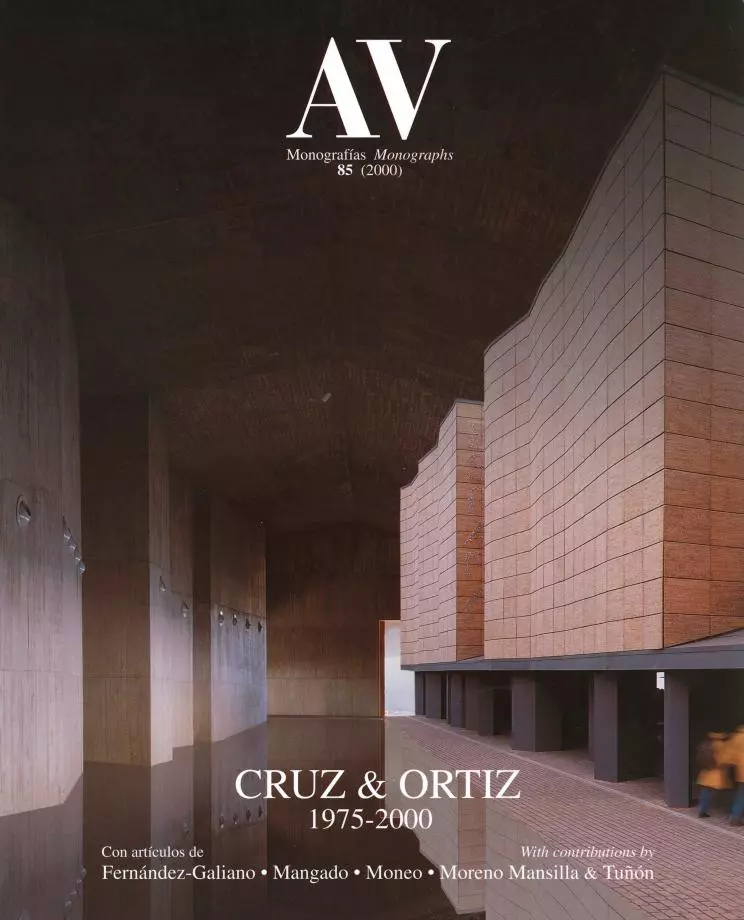Candelaria Bastion, Cádiz
Cruz y Ortiz Arquitectos- Type Museum Culture / Leisure
- Date 1986 - 1989
- City Cadiz
- Country Spain
- Photograph Hisao Suzuki Duccio Malagamba


The project for the Cádiz fortress is fantastic. Cádiz is an incredible city, so prettily neoclassic, and which you Sevillian architects have always been fond of.
—Diehard Sevillians only like Seville. It is generally Sevillians who are less Sevillian, like us, who love Cádiz.
—In projects of this kind, the question is how to work on an existing mark. Is this case a mere matter of adjustment?
—We have always liked to work on old buildings that are not excessively impregnated with historic and architectural value. The cathedral of León would be tremendous.
—Painful.
—Downright painful... Nevertheless, there are historic constructions we have had the chance to intervene in, which allow your intervention to bear a fair degree of identity, and the Candelaria bastion is a case in point... Still, who knows if we would undertake that project today with as much energy. The building did not alter on account of us. What we did was superpose several galleries in a totally reversible way. They could be eliminated at any time and nothing terrible would happen. There are moments [pointing at the section, where the new elements literally rest on the preexisting] which clearly illustrate our desire not to contaminate the building. In a way we were being narrative...
—Narrating is not the same as giving clues.
—It is not an obsessive kind of narration, not the sort that obliges one to read it. Those are the worst, aren’t they? From our point of view, acting on existing constructions requires, first and foremost, an attitude of availability. That is to put oneself at the service of a building which already exists and, for any number of reasons, cannot maintain its original condition.
—And the greater the value of the existing building, the more the service.
—Yet when working with old and new there is always the temptation hard to resist, to be sure to use mechanisms of juxtaposition or contrast.
—And so, what to do? You either do a restoration job of the kind where you build the way the old building was built (by lying or reaching heights of pathetic archaism), or you follow mechanisms such as rendering anything new in white and leaving the old in stone – much in accordance with the Venice charter, but then you are really just telling, narrating, relating... It is very difficult to come up with something that would change the course of the building entirely.
—So what about that cornice?
—We would say that the cornice is more figurative than narrative. Surely one way to juxtapose new and old without too much narrative emphasis is by adopting certain figurative characters – that is, working out an architecture that is somewhat less abstract. Because if it is made abstract, the contrast appears, it becomes too explicative or simplistic... Without a doubt, to achieve a more complex whole, it is better to give the modern intervention a dose of figurativeness.
—If the figuration is opposed to the abstraction, the narrative, what exactly is it opposed to? Silence?
—Narrative is opposed to direct sensation and mystery. In architecture, to narrate is to tell an unnecessary story. The sensation manifests itself directly, without there being any need to give details of the process or highlight some anecdote removed from the work itself.
—You mean the way María Zambrano put it: “To think is... to decipher what one feels.”
—Not really. Let’s have an example having to do with structure. With large spans it is easy to resort to narrative, with an entire deployment that explains how each element functions. But a non-narrative option only has to do with the feeling that one is under a large-span structure, and one doesn’t know what sustains the structure because it is not explained. That is, the final form is not a narration of the functioning of structural elements. We will always prefer the lintel to the arch or the catenary. Narration would be to show that the rabbit is inside the top hat – the transparency question. In our view, the mechanisms of the art work must remain hidden.
—Three things in your discourse clearly explain your anti-narrative vocation: one,
‘sending ideas to the kitchen’; two, ‘superposing layers of physicality’; three, ‘hiding mechanisms’.
—The artistry lies in the desire to transmit a sensation, but never evidently. It’s like saying I tell you but I don’t, I transmit to you but don’t...
—When making architecture, it often happens that one consciously tries to take out of the projects whatever is more personal, in order to feel that the project can be shared by the rest?
(Maybe the question is better understood through some lines by Fernando Pessoa which have always impressed us: “The poet is a faker / he fakes so completely / as to fake that it is pain / the pain he really feels.”)
—We don’t think that makes it any less personal, convinced as we are that in such concealment lies the most deeply personal side of our work. Building a work of architecture requires plenty of effort, and surely all of us, all four of us, will agree that this should later be hidden – the effort, that is, the trick, the hours the magician has spent to make the dove fly out of the handkerchief. The elegant thing is to make the effort unperceivable. Transparency, honesty and ethics, are important virtues to be required of the architect or any professional, though we also believe that the artistic field is, precisely, the field of concealment and non-transparency.
—And of the unspeakable.
—There is no need to be so solemn. This is, after all, just a game...
Conversation of the authors with Luis Moreno Mansilla and Emilio Tuñón.
[+]
Cliente Client
Ayuntamiento de Cádiz
Arquitectos Architects
Antonio Cruz & Antonio Ortiz
Colaborador Collaborator
Manuel Delgado (aparejador quantity surveyor)
Contratista Contractor
Hispano-Alemana de Construcciones
Fotos Photos
Duccio Malagamba, Hisao Suzuki







